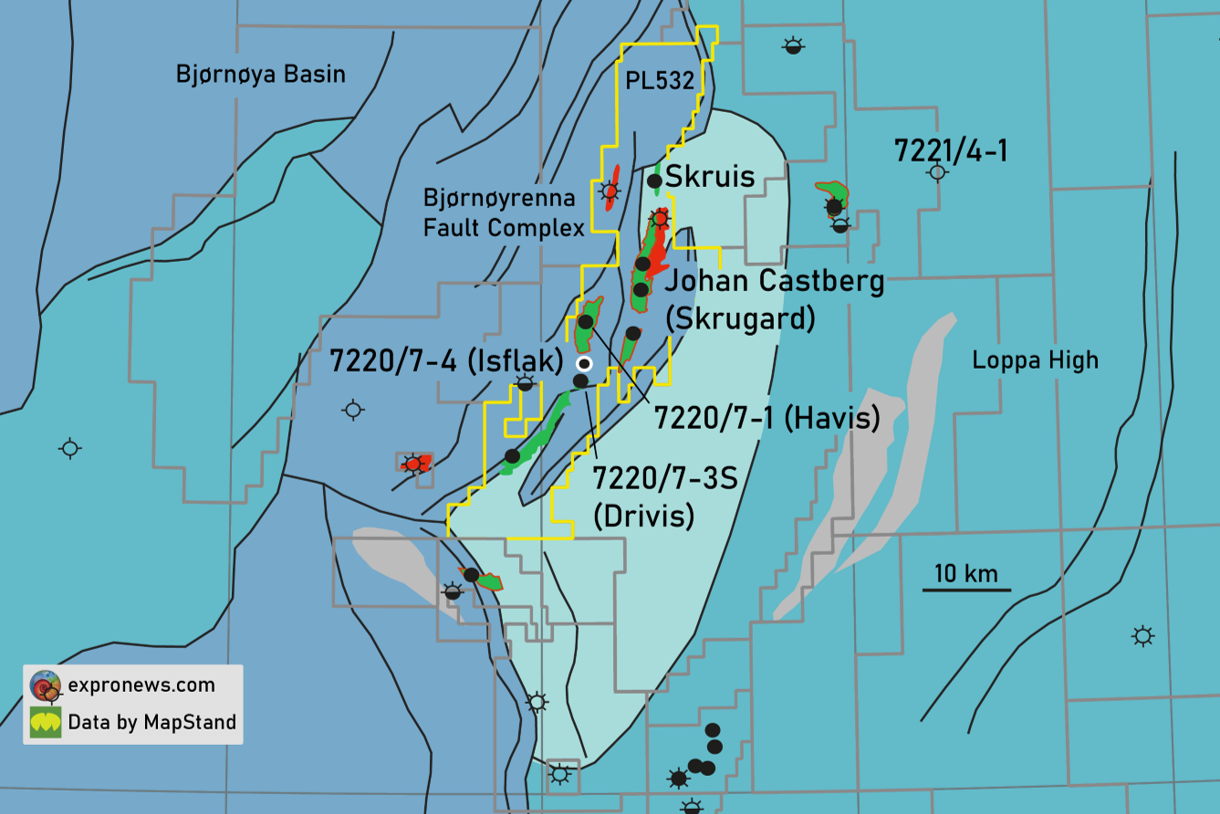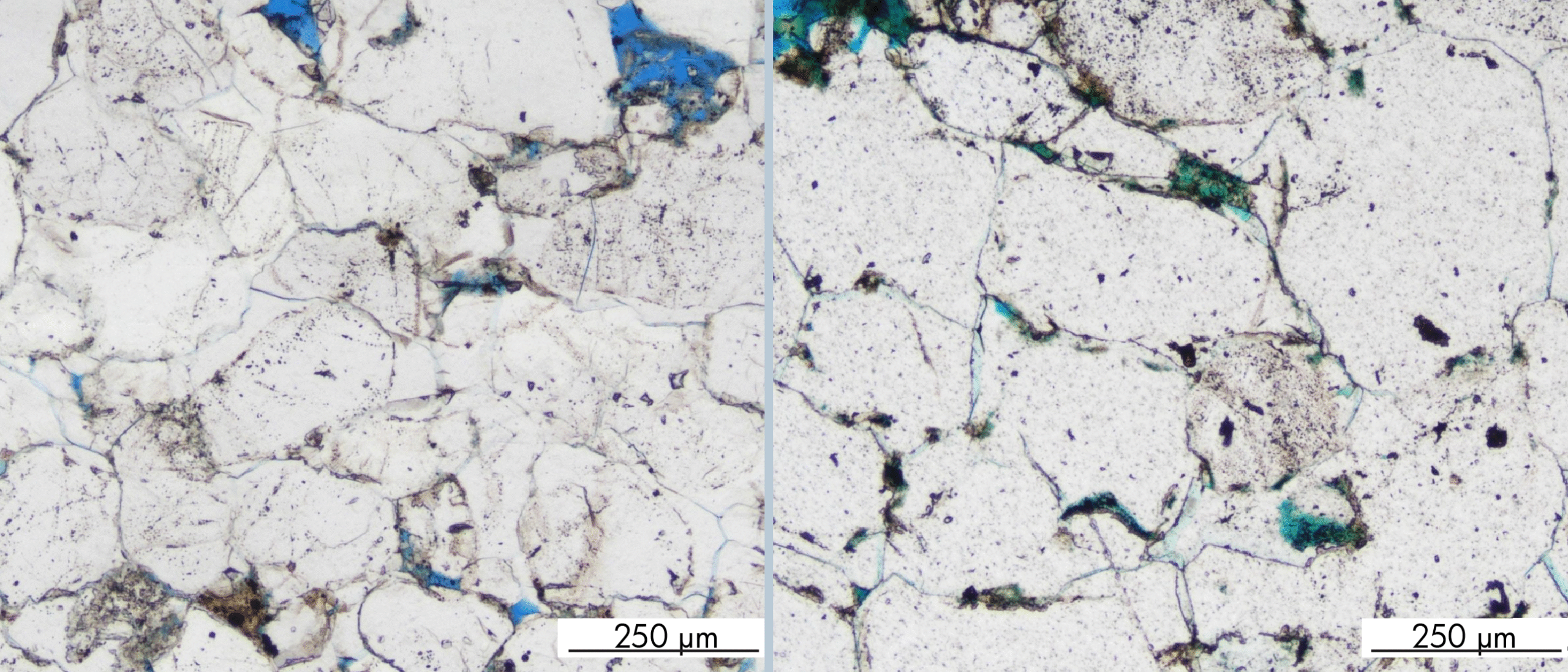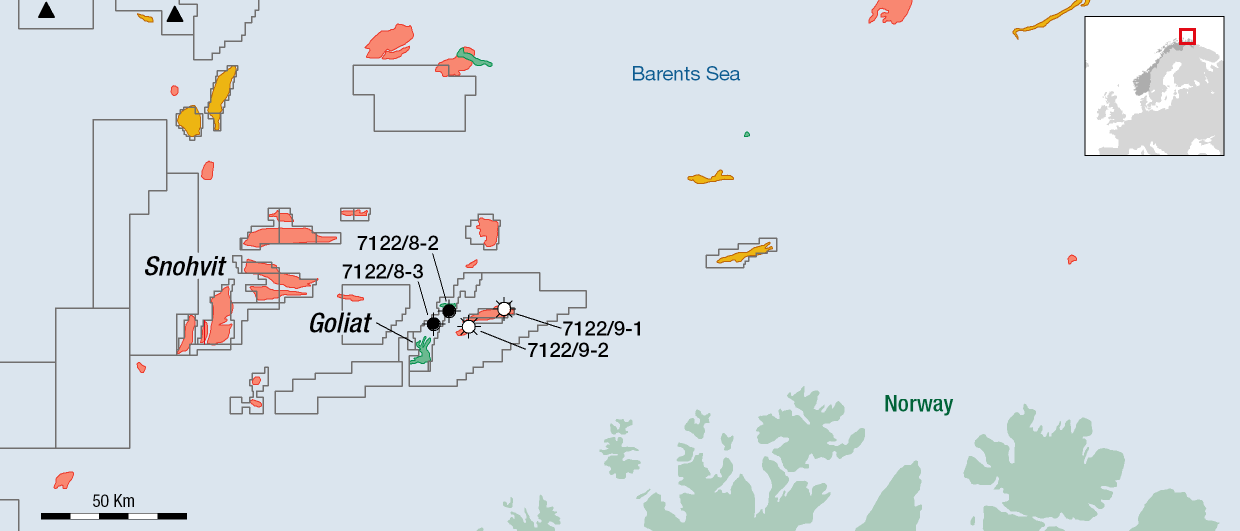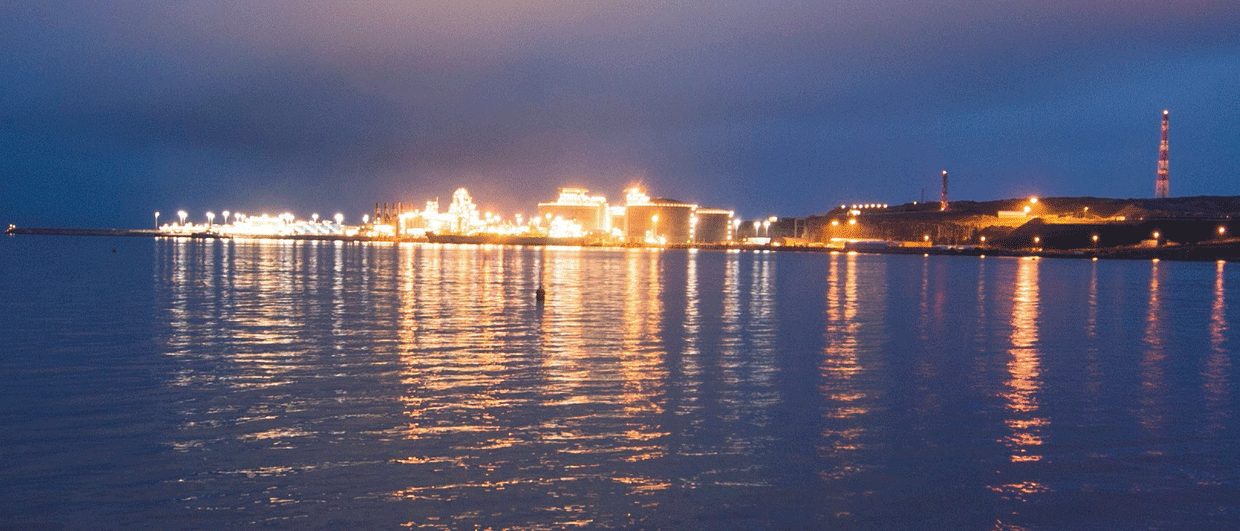After a number of Barents Sea dry holes, Equinor and partners Vår (30%) and Petoro (20%) this week announced the discovery of 31 to 50 MMb of recoverable oil through completing well 7220/7-4 (Isflak). Located in the middle of the Johan Castberg area development, Isflak can probably be integrated into existing production strategy, but this “will be considered at a later stage”.
Drilled between the Havis (7220/7-1) discovery in the north and Drivis (7220/7-3S) in the south, the well targeted the same Lower to Middle Jurassic reservoirs of the Stø and Nordmela formations. An oil column of 109 m has indeed been confirmed in these formations, but the expected gas cap was missing, in contrast to both the Havis and Drivis accumulations.
Documents published by the Environment Agency stated that the expected contacts in the Isflak well were 1832 m and 1948 m for the GOC and OWC respectively. With the press release mentioning an OWC of 1897 m, the contact was found at a shallower level than foreseen, which must have had a detrimental effect on the estimated pre-drill volumes.

One field?
Although the OWC now established in Isflak is 59 m shallower than the one at Havis, looking at the seismic section kindly provided by CGG – showing the Havis discovery in the north and the Drivis discovery in the south – it is tempting to interpret the three discoveries as being part of the same field, albeit with different contacts and sealing faults separating the compartments. In that light, again looking at the the contacts and focusing on the undrilled fault blocks in between Havis and Isflak, it seems likely that there will be hydrocarbons in this area too. However, given the more downfaulted nature of the blocks, the volumes are likely to be fairly small.
Further work
Well 7220/7-4 was part of a four-well Barents Sea campaign Equinor embarked on. Of the remaining three wells to be drilled, Equinor will be the operator of one (Shenzou in PL722) and partner in the other two (one in the Goliath field licence (PL229) and the last one near the offshore boundary with Russia in PL858.
The Transocean Enabler drilling facility that drilled Isflak will now continue to drill production wells in connection with the Johan Castberg field development. The Johan Castberg field is estimated to contain up to 560 MMboe distributed amongst the Skrugard, Havis and Drivis accumulations.
HENK KOMBRINK





